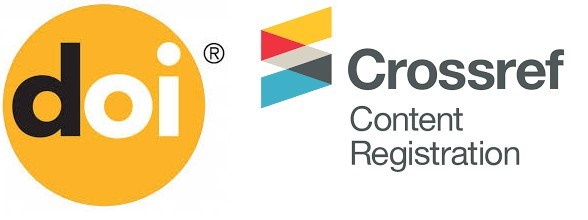Pengembangan Media Pembelajaran Kosakata Bahasa Arab Berbasis Plotagon Story Di SMP Muhammadiyah 8 Tanggulangin Sidoarjo
DOI:
https://doi.org/10.32699/liar.v6i2.3489Keywords:
Learning Media, Arabic Vocabulary, Plotagon StoryAbstract
The more Arabic vocabulary mastered, the easier it is to use Arabic because it can convey meaning to other people well. The use of media affects the suitability of messages received by students. One of the media that can be used in learning Arabic vocabulary is an animated learning video based on the Plotagon Story application. In observations made at SMP Muhammadiyah 8 Tanggulangin Sidoarjo, researchers found a lack of innovation in learning Arabic, especially in Arabic Vocabulary. The development of Arabic vocabulary learning media based on the Plotagon Story application in schools aims to provide innovation in Arabic learning media so as to help students understand Arabic vocabulary. In this study, researchers used the R&D development research method with the Addie model and with research instruments in the form of interviews, observations, questionnaires which were then analyzed using descriptive (qualitative) and quantitative analysis techniques. The result of this research is that the cumulative percentage of student responses to the Plotagon Story application-based vocabulary learning media is 82.4%. Utilization of technology in learning media aims to add student learning styles, not limiting the time and place for students to study, providing space for students to use technology for education.
References
Fajriah, Z. (2015). Peningkatan Penguasaan Kosakata Bahasa Arab ( Mufradat ) Melalui Penggunaan Media Kartu Kata Bergambar ( Penelitian Tindakan Pada Siswa Kelas I Mi Nurul Hakimkediri Lombok Barat Tahun 2015). Jurnal Pendidikan Usia Dini, 9, 107–126.
Hasna Qonita Khansa. (2016). Strategi Pembelajaran Bahasa Arab. Prosiding Konferensi Nasional Bahasa Arab II,Universitas Negri Malang 53–62.
Ilmiani, A. M., Ahmadi, A., Rahman, N. F., & Rahmah, Y. (2020). Multimedia Interaktif untuk Mengatasi Problematika Pembelajaran Bahasa Arab. Al-Ta’rib : Jurnal Ilmiah Program Studi Pendidikan Bahasa Arab IAIN Palangka Raya, 8(1), 17–32.
Jamil, Husnaini, and Nur Agung.(2022) “Tantangan Pembelajaran Bahasa Arab Di Era Society 5.0: Analisis Pembelajaran Bahasa Arab Berbasis Aplikasi Interaktif.” Alibbaa’: Jurnal Pendidikan Bahasa Arab 3, no. 1 (2022): 38–51.
Mahmuda, S. (2018). Media Pembelajaran Bahasa Arab, 20(01), 130–138.
Mahmudi, M. (2016). Penerapan Teori Behavioristik Dalam Pembelajaran Bahasa Arab (Kajian Terhadap Pemikiran Bf . Skinner). Prosiding Konferensi Nasional Bahasa Arab II,Universitas Negri Malang 02(01), 429–435.
M. Khalilullah, S.Ag. MA. “Permainan Teka-Teki Silang Sebagai Media Dalam Pembelajaran Bahasa Arab (Mufradat).” Jurnal pemikiran Islam 37, no. 1 (2012): 15–26..
Muhammad, Thohir, and Dkk.(2021) “Prelude Aplikasi Plotagon Story Untuk Keterampilan Berbicara Pada Pembelajaran Bahasa Arab Sesuai KMA 183 Tahun 2019.” TADARUS: Jurnal Pendidikan Islam 10, no. 1 (2021): 1–12.
Nathiqin Bin Ibrohim, A.-F. A. R. (2010). Idoat Lil Mu’alimi Lughotul Al-Arabiyah Li Ghoiri Nathiqin,. Arabiyah Lil Jami’.
Oensyar, K. (2015). Metodologi Pembelajaran Bahasa Arab, Telaah Problematika Pembelajaran Bahasa Arab.
Prananingrum, A. V., Rois, I. N., & Sholikhah, A. (2020). Kajian Teoritis Media Pembelajaran Bahasa Arab. Jurnal Pendidikan Bahasa Arab, 3(1), 303–319.
Rasyidi, A. W. dan M. N. 2011. Memahami Konsep Dasar Pembelajaran Bahasa Arab. Malang:UIN-MALIKI PRESS.
Rayanto, Y. H. dan S. 2020. Penelitian Pengembangan Model Addie Dan R2d2 : Teori Dan Praktek . Pasuruan:Lembaga Academic dan Research Intitute.
SHOLIHAH, S. (2018). Penggunaan Media Gambar Dalam Pembelajaran Mufrodat. Tarling : Journal of Language Education, 1(1), 62–76.
Sholihatin, L. (2020). “Pengembangan Media Pembelajaran Bahasa Arab Berbasis Aplikasi Plotagon Pada Siswa Ma Nu Petung Panceng Gresik.” Prosiding Konferensi Nasional Bahasa Arab, Universitas Negri Malang, no. 1986: 320–326.
Downloads
Published
Issue
Section
License
Authors who publish with this journal agree to the following terms:
a. Authors retain copyright and grant the journal right of first publication with the work simultaneously licensed under a Creative Commons Attribution-ShareAlike 4.0 International License. that allows others to share the work with an acknowledgement of the work's authorship and initial publication in this journal.
b. Authors are able to enter into separate, additional contractual arrangements for the non-exclusive distribution of the journal's published version of the work (e.g., post it to an institutional repository or publish it in a book), with an acknowledgement of its initial publication in this journal.
c. Authors are permitted and encouraged to post their work online (e.g., in institutional repositories or on their website) prior to and during the submission process, as it can lead to productive exchanges, as well as earlier and greater citation of published work (See The Effect of Open Access).












